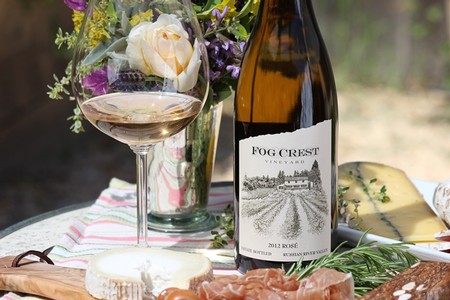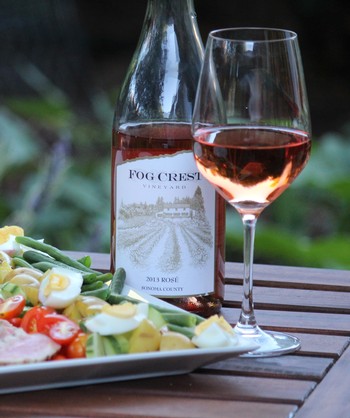-
Shop
The Wines
Experience the terroir of Fog Crest Vineyard with our selection of award-winning wines.
The Goods
Browse the merchandise and apparel available in the Fog Crest Vineyard shop, or purchase a ticket to one of our upcoming events.
-
Visit
Our Tasting Room
High atop the Laguna de Santa Rosa, our well-appointed tasting room boasts one of the most beautiful views in Sonoma County.
Contact & Location
Fog Crest Vineyard is located in beautiful Sebastopol, California in Sonoma County.
-
Wine Club
Join the Club!
Join our wine club for quarterly shipments, complimentary tastings, discounts, exclusive events and more!
Wine Club FAQ
Have questions about wine club membersip? We've got the answers! Read our Wine Club FAQ.
- Events
-
About Us
Our Philosophy
At Fog Crest Vineyard, our unique terroir is married to meticulous viticultural practices, blending modern technology with old-world winemaking.
The Vineyard
Fog Crest Vineyard was established in 1998 in the Russian River Valley American Viticultural Area of Sonoma County, California.
Cheers to Rosé Season
Welcome Spring and welcome Rosé!

Spring is here and with it, warmer weather and the promise of summer. It’s so easy to start thinking about long afternoons by the pool, backyard barbecues, picnics and concerts in the park. Here at Fog Crest Vineyard, this time of year also means the release of our new Rosé of Pinot Noir, a wine perfectly suited for the season.
Rosé walks that line between red and white wine - not as tannic as red, but with plenty of depth and acidity, Rosé seems to pair beautifully with just about any type of food, including grilled meats.
The production of Rosé is similar to that of red wine, except that we do not allow the juice of the Pinot Noir grapes, which is white, to come in contact with the red skins during maceration and fermentation.
After an early morning pick in ideally cold weather, the whole clusters are quickly loaded into the press for a short, gentle cycle of only about 3 hours. Although there is no actual skin contact, the juice is lightly colored during this process.
The juice is then placed in a jacketed tank, chilled to 45ºF and settled for 4 days in order to obtain maximum clarity.
After racking from the settling lees, fermentation starts in the tank. We ferment the Rosé cold which allows us to capture as much of the fruit flavors as possible. It’s a longer process due to the fermentation temperature, taking about 3 weeks for the wine to go dry (convert residual sugar to alcohol).
Upon dryness, the wine is racked again to prevent any yeasty aromas, and transferred to neutral barrels. Malolactic fermentation is blocked to ensure maximum acidity.

Rosé is meant to be enjoyed young, not cellared for years like most reds and some whites. While we make ours with Pinot Noir grapes, Rosé can be made from any red wine grape, and it’s very interesting, and fun, to try rosés from different parts of the world. France and Spain actually lead the way in Rosé production, often blending 2-3 different grape varieties.
So enjoy the world through Rosé filled glasses now before it’s gone till next year.
Recipes that pair with Rosé:
Rosemary Flatbread with Gorgonzola and Grapes

Comments
Commenting has been turned off.Recent Posts
-
February 11, 2021
-
August 12, 2019
-
July 25, 2019
-
June 11, 2019
-
May 22, 2019
-
February 20, 2019
-
January 11, 2019
-
October 23, 2018
-
October 9, 2018
-
April 23, 2018